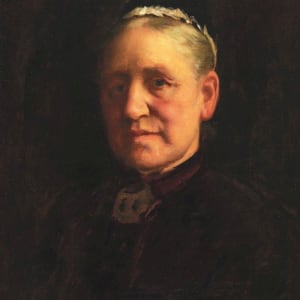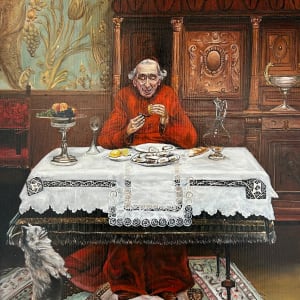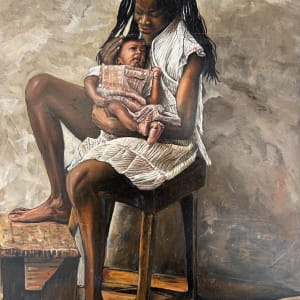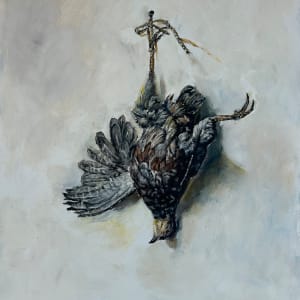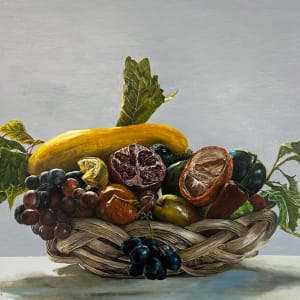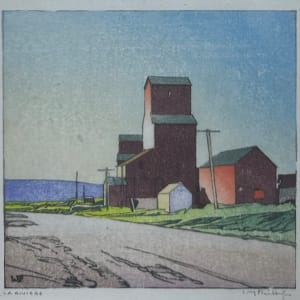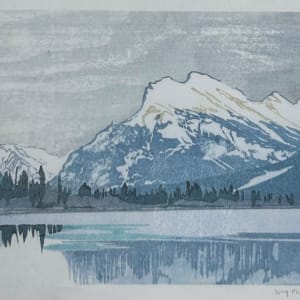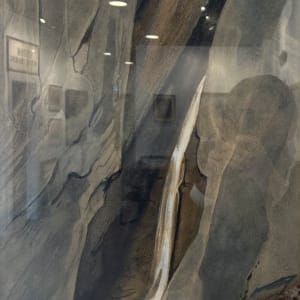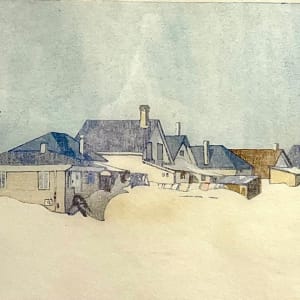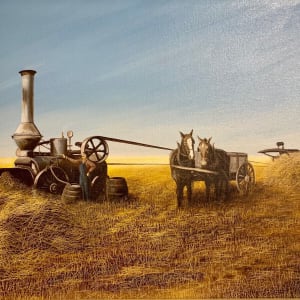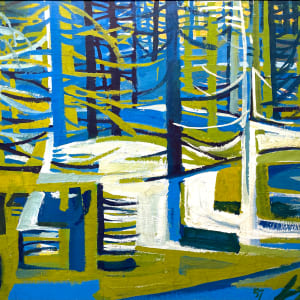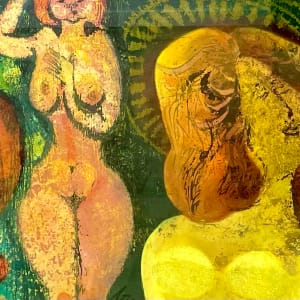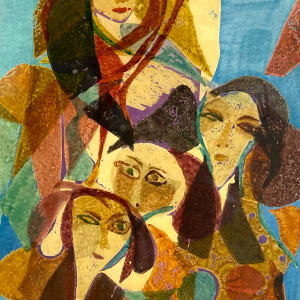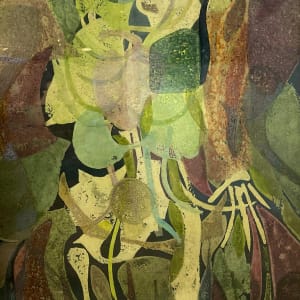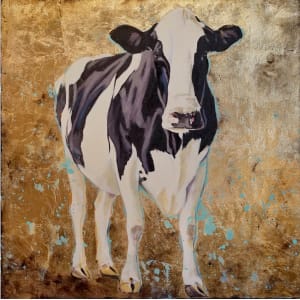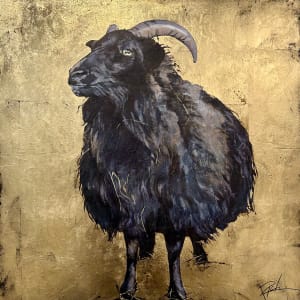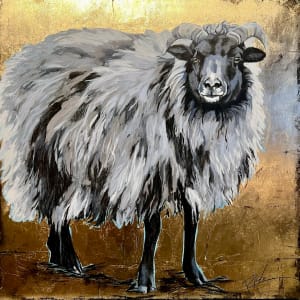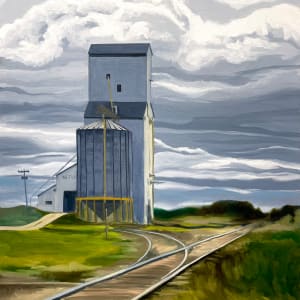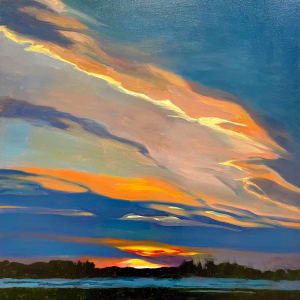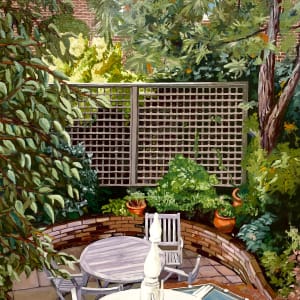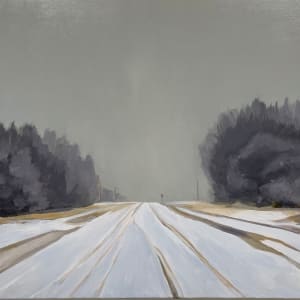Arthur Winter Shaw (1869-1948) British
Arthur Winter Shaw (1869–1948) was a British artist born in Peckham, the son of a Clerk to the War Office. He studied at Westminster School of Art and the Slade School of Fine Art before moving to Amberley in Sussex around 1904, where he became part of a vibrant artistic community founded by Edward Stott, often referred to as the "poet-painter of twilight." Stott's influence is evident in Shaw's work, which often explores the atmospheric qualities of light and landscape.
Shaw was a frequent exhibitor at galleries in London and across the provinces, where his works were well-received for their unique interpretation of nature and light. His involvement in the artistic scene during this period contributed to his recognition as a talented painter within the broader British art community.
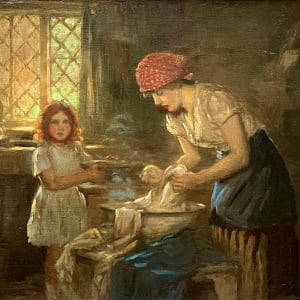
Walter Joseph Phillips (1884-1963)
Walter J. Phillips (1884–1963) was an English-born Canadian painter and printmaker, renowned for popularizing Japanese-style colour woodcuts in Canada. After training at the Birmingham School of Art, he moved to Winnipeg in 1913, where he depicted the lakes of Manitoba, the Prairies, and later, the Rocky Mountains in his delicate woodcuts and watercolours. In 1940, he became a resident artist at the Banff Centre, shaping its visual arts program. A member of the Royal Canadian Academy of Arts, his work is held in major collections, including the Glenbow Museum and the National Gallery of Canada.
Terry Mclean (1935-2023)
Terry McLean (1935–2023) was a self-taught Manitoba artist known for his landscape and wildlife paintings. Born in Virden, Manitoba, he developed a passion for sketching nature while accompanying his father on a trapline. After working as a postal clerk and oil well monitor, he dedicated himself fully to art in 1975. Inspired by Clarence Tillenius, he became well known for his decorative plates and SIR Sporting Goods catalogue covers, which featured his work for over 40 years. In 1967, he painted a 46x5-foot mural commemorating Canada’s centenary. He opened an art gallery in Virden in 1990, which operated until 2017.

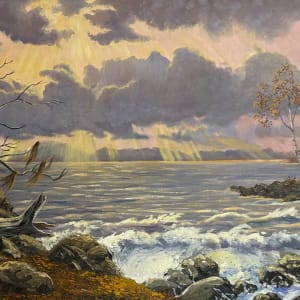
Georgie Maud Roberta Wilcox (1889-1970)
Georgie Maud Roberta Wilcox (1889–1970) was a Canadian artist born in Winnipeg, the daughter of Eliza Roberta Jenkins and William Crawford. She married Howard Buell Wilcox in 1907, with whom she had two children. Inspired by Paul Kane's works at the age of 14, she began painting portraits and later developed a passion for watercolour and oil urban scenes and landscapes. Active in the Winnipeg Sketch Club by the 1940s, Wilcox gained recognition for her public exhibitions. She passed away at her Winnipeg home on October 10, 1970.
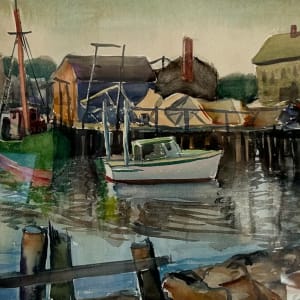
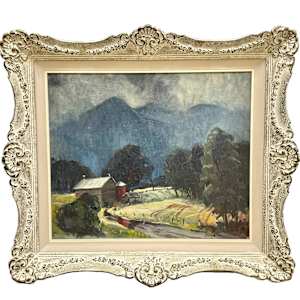
Lionel LeMoine FitzGerald (1890-1956)
Lionel LeMoine FitzGerald (1890–1956), also known as L.L. FitzGerald, was a Canadian artist and educator based in Winnipeg, Manitoba. He was the only western Canadian member of the iconic Group of Seven and later became a founding member of the Canadian Group of Painters. Known for his meticulous and meditative approach to art, FitzGerald’s work spans landscapes, still lifes, drawing, printmaking, and sculpture. His style evolved from Impressionism to a more abstract, Precisionist aesthetic, influenced by his surroundings in Manitoba. FitzGerald emphasized the formal relationships between shapes, colors, and lines, seeking to make his paintings "living things." He was also a prominent art educator, serving as principal of the Winnipeg School of Art from 1929 to 1947. FitzGerald's work received numerous honors, including an honorary doctorate from the University of Manitoba, and his art continues to fetch significant prices at auction.
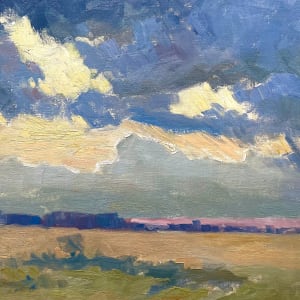
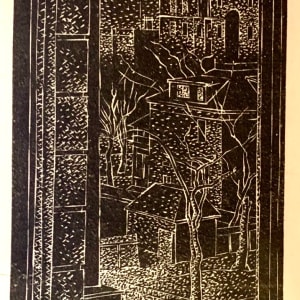
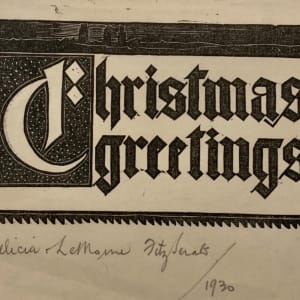
Saul Raskin (1878-1966) - American
Saul Raskin (1878–1966) was a Russian-born American artist, writer, lecturer, and critic, best known for his depictions of Jewish life and culture. Trained in lithography in Odessa, he traveled through Europe before immigrating to New York City in 1904 or 1905.
Raskin was a prolific satirical cartoonist and critic, contributing to Yiddish publications such as Der Groyser Kundes and Dos Naye Land. His writings explored the evolution of Jewish art, advocating for its development rooted in folk themes. He was also a dedicated educator, organizing museum tours and lectures to make art accessible to the Jewish public.
A realist painter and illustrator, Raskin’s works vividly captured Jewish traditions, the Lower East Side, and life in Palestine and Israel, where he traveled extensively. He illustrated numerous religious and cultural texts, including the Haggadah for Passover and Tehilim (The Book of Psalms).
An ardent Zionist, Raskin believed Jewish identity was central to his art, stating, "Above all, I am a Jewish artist." His work remains a significant contribution to Jewish-American cultural heritage.
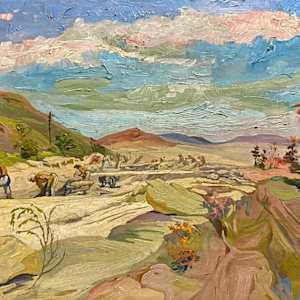
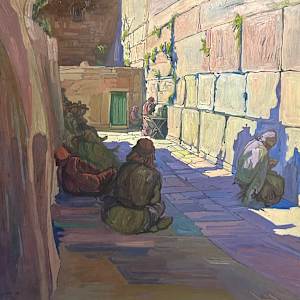
Alfred Joseph (AJ) Casson (1898-1992)
Alfred Joseph (A.J.) Casson (1898–1992) was a prominent Canadian artist and a key member of the Group of Seven, known for his distinctive landscapes. Born in Toronto, Casson developed an early interest in art and became a well-respected illustrator before focusing on fine art. He joined the Group of Seven in 1926 and played a significant role in capturing the essence of Canada's rural and wilderness areas through his work. Casson’s style is characterized by bold, simplified forms, vibrant colors, and an emphasis on the Canadian landscape, particularly Ontario’s rural scenes. He is celebrated for his contributions to Canadian art, and his work remains an integral part of the country’s artistic heritage.
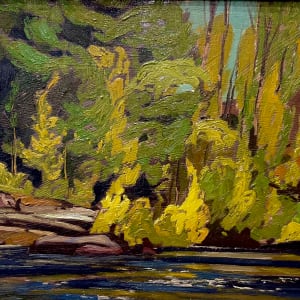
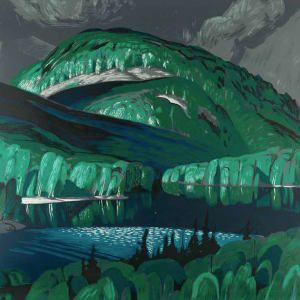
Ivan Eyre (1935-2022)
Ivan Eyre (b. 1935, Tullymet, Saskatchewan d. 2022) is one of Canada's most respected and influential artists, known for his figurative paintings, sculptures, and drawings. A graduate of the University of Manitoba, Eyre taught painting and drawing at the university until his retirement in 1993, inspiring many leading contemporary artists. His work explores diverse subjects including personal mythologies, still lifes, portraits, and panoramic landscapes, often with a focus on mystery and visual appeal. Eyre has received numerous honors, including the Order of Canada (2015) and the Order of Manitoba, and his work has been exhibited in over 65 solo and 250 group shows worldwide. His pieces are held in more than 33 museums and galleries across Canada, and his personal collection is permanently housed in the Ivan Eyre Gallery at the Pavilion Museum in Winnipeg.
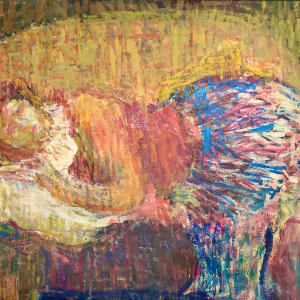
Emily Carr (1871-1945)
Emily Carr (1871–1945) was a Canadian artist and writer, renowned for her vibrant depictions of Indigenous villages and the landscapes of British Columbia. Born in Victoria, she studied art in San Francisco, London, and Paris, where she was influenced by Fauvism and Post-Impressionism. Carr’s work focused on capturing the monumental presence of First Nations totem poles and the natural beauty of the West Coast. She became known for her bold use of color and innovative approach to landscape painting, often blending themes of nature and Indigenous culture.
Her first book, Klee Wyck (1941), won the Governor General's Literary Award, and she became a key figure in the development of Canadian modernism, exhibiting with the Group of Seven. Though she faced initial resistance to her work, her reputation grew posthumously, and she is now considered a Canadian icon. Carr’s legacy as a pioneering artist and chronicler of the Pacific Northwest continues to resonate in both the art world and Canadian culture.
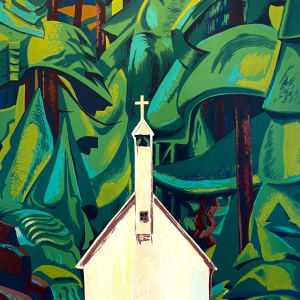
Robert Bruce (1911-1980)
Robert Bruce (1911–1980) was a Canadian painter, illustrator, muralist, and printmaker known for his dynamic compositions and vibrant use of color. Born in Grandview, Manitoba, he studied at the Winnipeg School of Art under L.L. Fitzgerald before continuing his training in London and Paris.
During World War II, Bruce served as a war artist, documenting the human effort of Canada’s northern expedition, Exercise Musk-ox. Post-war, he moved to New York, where his illustrations appeared in Life, The New York Times, Harper’s, and Maclean’s. Returning to Canada, he became a respected educator at the University of Manitoba School of Art, where he influenced a generation of artists.
An avid outdoorsman, Bruce’s love for movement and nature shaped his art. After retiring in 1976, he divided his time between Falcon Lake and San Miguel de Allende, Mexico, where he passed away in 1980. His legacy was celebrated in 2004 with a retrospective at the Winnipeg Art Gallery.
Joachim George Gauthier (1897-1988)
Born in North Bay, Ontario, Gauthier moved to Toronto after living in Washington State and Hamilton. He studied under Group of Seven artists Franklin Carmichael and J.E.H. MacDonald, and later worked as a commercial artist for Sampson Matthews Limited for 37 years. At age 35, art director A.H. Robson recognized Gauthier's potential, praising his originality and skill. Gauthier frequently accompanied A.J. Casson on sketching trips and exhibited with the Group of Seven.
In 1947, Gauthier was elected an Associate of the Royal Canadian Academy and was a member of both the Canadian Society of Painters in Water Colour (1931) and the Ontario Society of Artists (1933). His works are part of the National Gallery of Canada’s collection, and he is also known for his portraits of Tom Thomson, the Group of Seven, and their contemporaries, commissioned by the McMichael Canadian Art Collection.
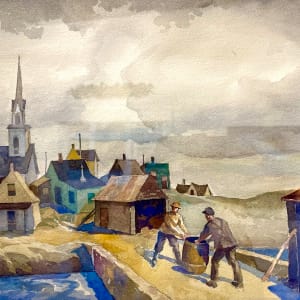
Ray Mead (1921-1998)
Ray Mead (1921–1998) was a Canadian abstract expressionist and a member of Painters Eleven, a group that introduced modern abstraction to Canada. Born in Watford, England, he studied at the Slade School of Art before moving to North America during World War II. Settling in Hamilton, Ontario, in 1946, he became a key figure in Canadian abstraction, influenced by Robert Motherwell and Stuart Davis.
Mead worked as an art director at MacLaren Advertising in Toronto and Montreal, where he connected with Quebec abstractionists. His bold use of color and structural compositions, often featuring high horizon lines, set his work apart. Fellow artist William Ronald called him "the most intellectual" of Painters Eleven.
After returning to Toronto in 1987, Mead painted continuously until his passing. His work is held in major Canadian collections, including the National Gallery of Canada and the Art Gallery of Ontario, with retrospectives celebrating his impact on Canadian abstraction.
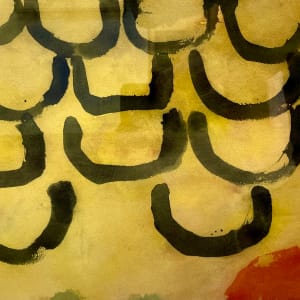
Lawren Rich
Lawren Rich is a contemporary painter with over 30 years of experience, blending graphic design and mural art into a unique abstract style. After studying at Red River College and gaining hands-on experience through large projects like Hotel Fort Garry murals, they developed a multimedia approach to painting. Influenced by contrasts between urban and rural landscapes, their work incorporates minimalism and layered textures.
Rich has exhibited locally and nationally, with international exposure in Ferrara, Italy. They’ve taught workshops, represented Golden Paints in Manitoba, and donated to causes like the Canadian Cancer Society. In addition, Rich is an active jazz guitarist, blending creativity from both mediums.
Morley Myers (1956-2018)
Morley Myers (1956-2018) was a Canadian sculptor known for his expressive stone carvings that blend primitive imagery with contemporary sensibilities. A self-taught artist, Myers began sculpting in 1991, exhibiting across Canada and the U.S.
Myers approached stone with a process-driven philosophy, allowing natural fractures and imperfections to guide his work. Rooted in pre-postmodern artistic traditions, he drew inspiration from Picasso, Moore, and Brancusi, focusing on direct material engagement rather than symbolic constructs. His sculptures invite exploration, revealing dynamic forms that shift with perspective.
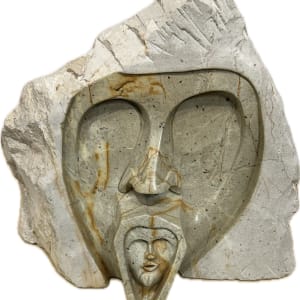
Julia Penny
Julia Penny is a Canadian portrait artist based in the Interlake region of Manitoba. After a successful career as a graphic designer, she transitioned to fine art, refining her skills through workshops and studies at The Heatherley School of Fine Art in London, UK.
Specializing in portraiture, Penny has completed numerous commissions, including acclaimed portraits of Roy Romanow and Pat Fiacco. Her work reflects the solitude and spaciousness of the Prairie landscape. She is an active participant in the Interlake WAVE Artists’ Studio Tour, welcoming visitors to her studio.
Franklin Carmichael (1890-1945)
Franklin Carmichael (1890–1945) was a Canadian artist and founding member of the Group of Seven, best known for his vivid watercolours depicting Ontario's landscapes. Born in Orillia, Ontario, he studied at the Ontario College of Art and later worked in commercial art, designing advertisements, brochures, and books. Carmichael co-founded the Canadian Society of Painters in Water Colour and often embraced spiritual and philosophical influences, particularly Theosophy, in his work. While his early art reflected Tom Thomson’s influence, he evolved to focus on the northern Ontario wilderness, particularly the La Cloche Mountains and Lake Superior. Carmichael also taught at the Ontario College of Art before his sudden death in 1945. His legacy endures in his contributions to Canadian landscape painting, particularly his watercolours.
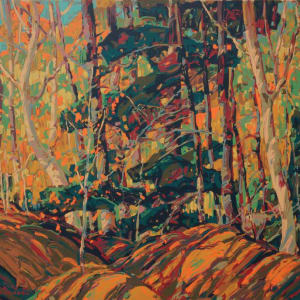
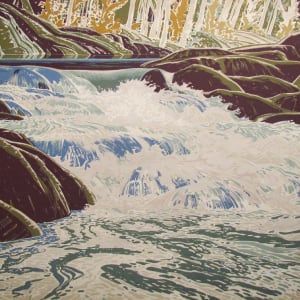
Charles Comfort (1900-1994)
Charles Fraser Comfort (1900–1994) was a Scottish-born Canadian painter, sculptor, teacher, and administrator. Moving to Winnipeg in 1912, he began his art career working as a commercial artist and later studied at the Art Students League of New York. Comfort became known for his landscape paintings, murals, and commercial commissions. He served as an official war artist during WWII and contributed to the Canadian War Art Program.
A founding member of the Federation of Canadian Artists, Comfort played a key role in establishing the Canada Council and served as the Director of the National Gallery of Canada from 1959 to 1965. His work includes murals for the Canadian Pacific Railway and the National Gallery, and he received numerous honors, including Officer of the Order of Canada in 1972. Known for his leadership in the Canadian art community, Comfort's legacy includes his involvement in art organizations and his teaching career at the Ontario College of Art and the University of Toronto.
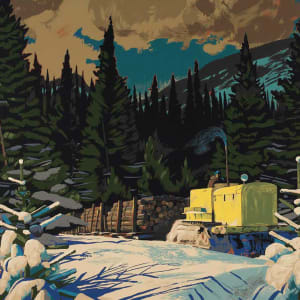
Paul Peel (1860-1892)
Paul Peel (1860–1892) was a Canadian figure painter known for his sentimental depictions of childhood and early explorations of the nude in Canadian art. Trained in Philadelphia under Thomas Eakins and later in Paris with Jean-Léon Gérôme, he exhibited regularly at the Paris Salon, earning international acclaim with a bronze medal for After the Bath (1890). His work balanced academic realism with emerging Impressionist influences. A member of the Ontario Society of Artists and the Royal Canadian Academy of Arts, Peel's promising career was cut short when he died at 31 from a lung infection.
